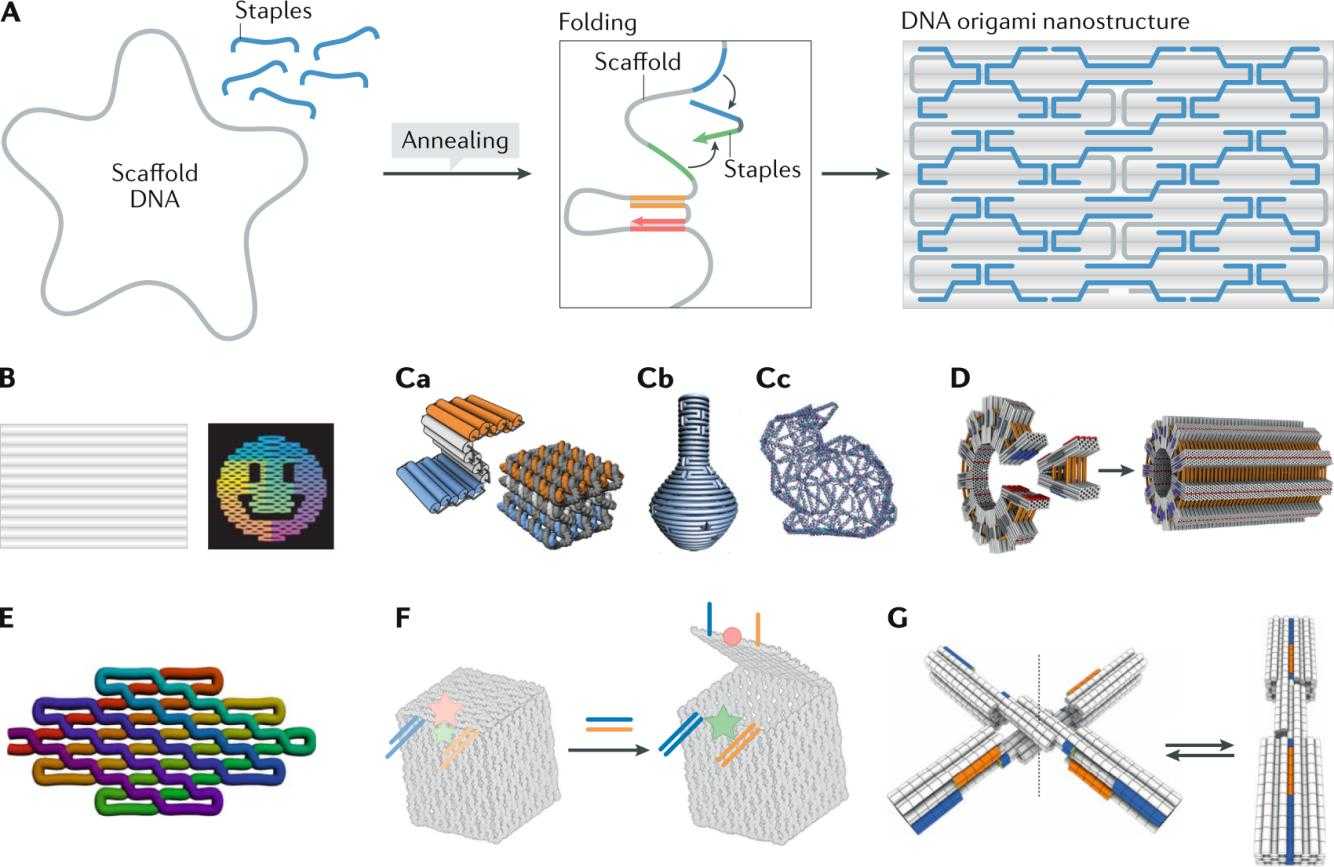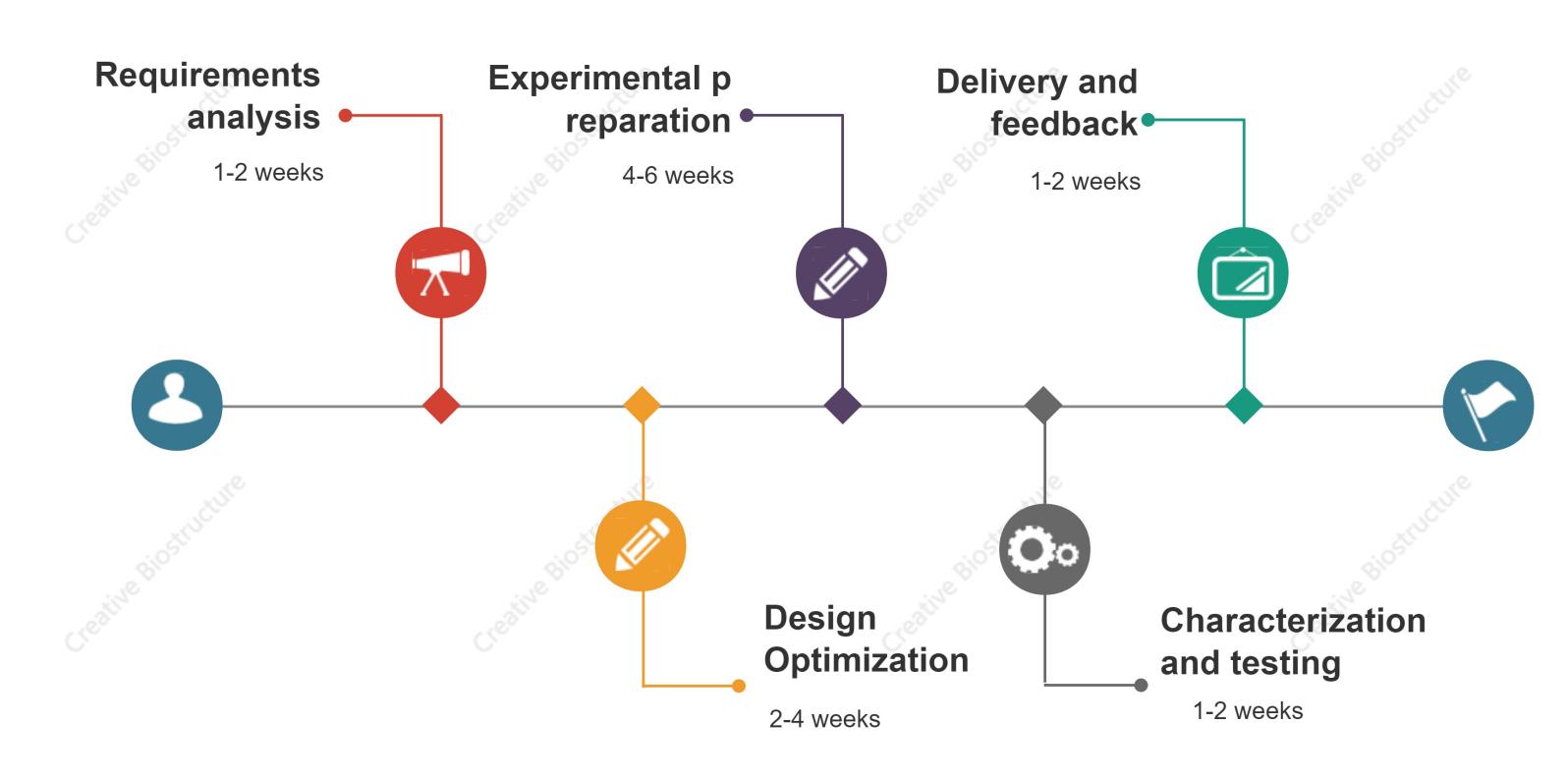DNA Origami and Self-Assembly Service
Creative Biostructure has always focused on the analysis of biological structures, providing cutting-edge DNA origami technology and self-assembly services. We are committed to helping customers achieve precise construction of complex structures at the nanoscale. By utilizing the natural properties of DNA, we design and manufacture nanostructures with specific shapes and functions to meet the scientific research and industrial needs in various fields.
What is DNA Origami Technology?
DNA origami technology is an innovative nanotechnology that harnesses the inherent properties of DNA molecules to create nanostructures with specific shapes and functions. This is achieved by meticulously controlling the folding and assembly of DNA chains, leading to highly programmable and stable structures that are ideal for self-assembly processes.
The process of DNA origami involves designing an excess of short single strands of DNA, known as "staple strands," and mixing them with a long single strand of DNA, referred to as the "scaffold chain." The scaffold chain serves as a foundational structure, while the staple strands act as connectors, folding the scaffold into the desired shape through complementary base pairing.
DNA origami can produce a variety of two-dimensional and three-dimensional nano-objects, such as rectangles, triangles, smiley faces, cuboids, hollow cylinders, wireframe polyhedrons, and changeable DNA origami structures, etc.
 Figure 1. DNA origami technology. (Dey S, et al., 2021).
Figure 1. DNA origami technology. (Dey S, et al., 2021).
Why Study DNA Origami?
- Biocompatibility and Precision: DNA origami structures are biocompatible and offer precise addressability, making them suitable for applications in targeted delivery and nanomaterial processing.
- Customizability: The technology provides robust support for creating nanomaterials with unique shapes and complex functions tailored to specific applications.
- Advancements in Design Tools: The development of software like caDNAno and DAEDALUS, along with the DNA Origami Computer-Aided Engineering (CanDo) tool, has significantly improved the efficiency and accuracy of DNA origami design and optimization. CanDo is capable of modeling the 3D structure of DNA origami, predicting its flexibility, and identifying key conditions for structural integrity.
DNA Origami Service at Creative Biostructure
Creative Biostructure offers DNA self-assembly services utilizing DNA origami technology. We achieve the autonomous assembly of DNA molecules by precisely designing and manufacturing DNA origami structures, as well as regulating the interactions between these structures.
 Figure 2. The workflow of our DNA origami service. (Creative Biostructure)
Figure 2. The workflow of our DNA origami service. (Creative Biostructure)
- Demand Analysis: First, conduct in-depth communication with customers to clarify their specific needs for DNA origami technology, including key parameters such as the required nanostructure shape, function, size, etc.
- Design Optimization
- Select DNA Scaffold: Based on customer needs, select an appropriate DNA scaffold, such as the M13 phage genomic DNA or other specific-length DNA molecules.
- Design "Staple" Strands: Use design software such as caDNAno and DAEDALUS to design hundreds of short "staple strands" that match the target nanostructure configuration.
- 3D Modeling and Prediction: Utilize computational tools such as CanDo to model the 3D structure of DNA origami, predict its flexibility and structural integrity, and optimize the design based on the prediction results.
- Experimental Preparation
- DNA Synthesis: Synthesize the required DNA scaffolds and short "staples" according to the designed sequences using chemical synthesis or biosynthesis.
- DNA Origami: Mix the DNA scaffold with the short "staples" under appropriate experimental conditions. Use thermal cycling and salt concentration adjustment, among other methods, to induce the DNA to fold into the target nanostructure.
- Characterization and Testing: Use transmission electron microscopy (TEM), atomic force microscopy (AFM), and other technologies to characterize and test the prepared DNA origami structures to ensure the accuracy of their shape, size, and function.
- Delivery and Feedback: Deliver the prepared DNA origami structures to customers and collect feedback for continuous improvement and optimization of services.
Our customized self-assembly solutions are tailored to construct nanosystems with specific shapes, functions, and complexities based on customer requirements. If you are interested in our services, please contact us for a detailed quotation.
Key Advantages of Our DNA Origami Service
- Superior Biocompatibility: Our DNA origami structures are designed to be highly biocompatible, making them ideal for integration with biological systems. This feature ensures the safe and effective application of our DNA nanostructures in medical and biological fields.
- High Precision and Addressability: With precise addressability, our DNA origami nanostructures can be programmed to achieve exact placement and organization within larger systems. This precision is pivotal for nanoscale operations and applications requiring meticulous detail.
- Robust Design: The stability of our DNA origami structures ensures they maintain their integrity and function in various environments. This robustness is essential for applications that require long-term durability and reliability.
- Customizable Shapes: We offer the ability to customize unique shapes and complex nanostructures, tailored to meet specific application needs. This versatility allows for innovative solutions across a range of fields.
- Efficient Design: Leveraging state-of-the-art software tools such as caDNAno, DAEDALUS, and CanDo, we enhance the efficiency and accuracy of designing and optimizing DNA origami structures. These tools provide advanced modeling and predictive capabilities, ensuring high-quality outcomes.
- Tailored Functionalities: Our service provides strong support for tailoring DNA nanostructures to unique shapes and complex functions, catering to diverse application needs such as targeted drug delivery and nanomaterial processing.
Resources
Nucleic Acid Structure
The core metabolic processes associated with nucleic acids are replication, transcription, and regulation, all of which rely on the recognition of nucleic acid sequences by proteins. Therefore, it is very important to understand the structural information of DNA and RNA to gain insight into the biological problems associated with the interaction of nucleic acids and proteins…
DNA Structure
Lots of DNA nanostructures have been produced and a wide range of potential applications have been proposed, such as DNA cages for drug delivery, protein crystal templates, medical diagnosis, and DNA computing systems…
Frequently Asked Questions
-
What is the turnaround time for designing and producing a custom DNA origami structure?
The turnaround time for designing and producing a custom DNA origami structure varies depending on the complexity of the project. Typically, the process includes initial design consultations, iterative design phases, synthesis, and validation. We always strive to provide realistic timelines and keep our clients updated throughout the project.
-
What kind of support do you offer for troubleshooting and optimizing the DNA origami design process?
We offer comprehensive support throughout the DNA origami design process. Our services include initial design consultations, iterative design adjustments, and ongoing troubleshooting. Our technical team is available to answer questions and provide solutions for any challenges that arise.
-
Are there any limitations on the size or complexity of the DNA origami structures you can produce?
While there are theoretical and practical limitations to the size and complexity of DNA origami structures, we have successfully designed and produced quite intricate and varied structures. The M13 phage genomic DNA scaffold we use supports moderate to large constructs. With the help of advanced design tools and software, we can push the boundaries of complexity.
Ordering Process
References
- Castro C E, Kilchherr F, Kim D N, et al. A primer to scaffolded DNA origami. Nature Methods. 2011. 8(3): 221-229.
- He Z, Shi K, Li J, et al. Self-assembly of DNA origami for nanofabrication, biosensing, drug delivery, and computational storage. Iscience. 2023. 26(5).
- Wang P, Chatterjee G, Yan H, et al. Practical aspects of structural and dynamic DNA nanotechnology. Mrs Bulletin. 2017. 42(12): 889-896.
- Dey S, Fan C, Gothelf K V, et al. DNA origami. Nature Reviews Methods Primers. 2021. 1(1): 13.
